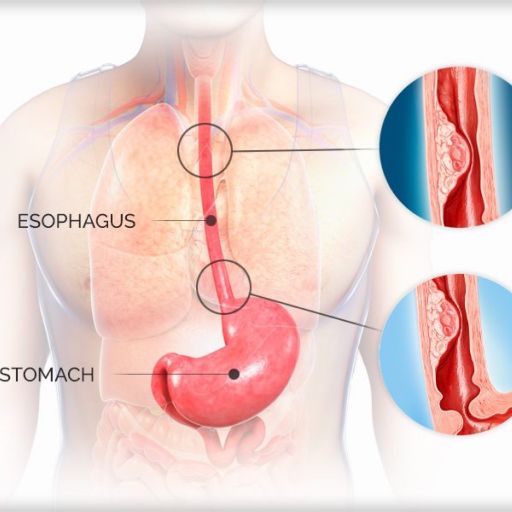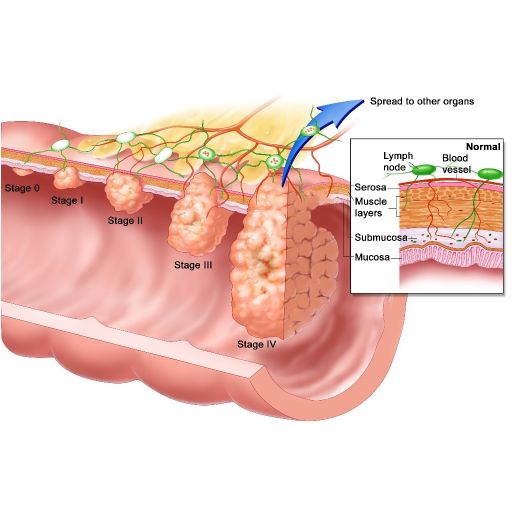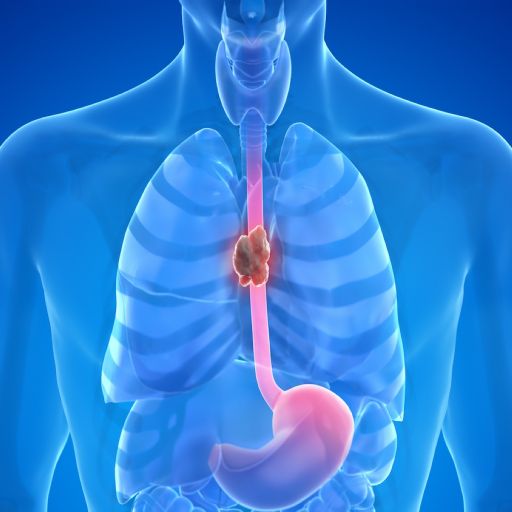Esophageal Cancer Symptoms, Risk Factors, and Treatment Options
In 2024, esophageal cancer continues to be an important public health problem. It belongs to the group of the most prevalent tumors in the world’s population and is one of the primary causes of cancer deaths.
According to data provided by the American Cancer Society for this year, 22070 new cases of esophageal tumor and 16130 cases of death due to this cancer are projected in the United States. This marks a small increase in the number of new cases and deaths from this disease since 2023.
For early diagnosis and efficient treatment, knowledge of the symptoms, risk factors, and their management is important.
Common types of esophageal cancer
The most common types of esophageal cancer start in the cells lining the esophagus. They include:
●Squamous cell carcinoma: more common in the upper esophagus.
●Adenocarcinoma: takes the spotlight in the lower esophagus.
These cancers can show up as a narrowing (stricture), a lump, an abnormal flat area (plaque), or even a bizarre connection (fistula) between the esophagus and the lungs.
Globally, squamous cell carcinoma is the reigning champ, but in the U.S., adenocarcinoma steals the show. Interestingly, squamous cell carcinoma is more prevalent in men and among Black individuals compared to White folks.
Less common players in the esophageal cancer game include leiomyosarcomas (cancers of the smooth muscle) and metastatic cancer (the kind that’s traveled from elsewhere).

Risk Factors for Esophageal Cancer
So, what ups your chances of getting esophageal cancer? Here are the main culprits:
●Alcohol
●Tobacco use (in any form)
●Gastroesophageal reflux disease (GERD), especially for adenocarcinoma
●Obesity (again, especially for adenocarcinoma)
●Older age
●Being male
●Barrett esophagus
●Genetic syndromes like Bloom syndrome and Fanconi anemia
Other risk factors? Think human papillomavirus (HPV) infection, radiation therapy to the esophagus, achalasia, and even swallowing something nasty like lye.
Most adenocarcinomas arise from Barrett esophagus, a precancerous condition caused by long-term irritation from stomach acid reflux. And if you’re packing extra pounds, watch out! Obesity raises your odds of developing adenocarcinoma due to the increased risk of GERD.

Symptoms of esophageal cancer
During the early stages, esophageal cancer symptoms are hard to detect. When the tumor enlarges and gradually constricts the esophagus, the first symptom is a problem swallowing solids. Within a few weeks, swallowing soft meals and even saliva can be a problem.
People begin to lose weight even when they follow a proper diet. Sometimes there is pain in the chest, which gradually spreads to the back.
At stage 4, the surrounding nerves and tissues may get affected. For instance, if the tumor presses on the nerve of the vocal cord, it may lead to hoarseness of the voice. In addition to this, it may cause back pain, difficulty breathing, and hiccups.
The cancer can spread to the lungs. This causes shortness of breath. It can also spread to the liver, leading to fever and swelling in the abdomen.
If it spreads to the bones, it can cause pain. It may lead to headaches, confusion, and seizures. If it spreads to the intestines, symptoms can include vomiting, blood in the stool, and low iron levels. Often, spreading to the kidneys does not cause any symptoms.
In the late stages, the cancer may completely block the esophagus. This makes swallowing impossible. As a result, secretions build up in the mouth, which can be very uncomfortable.
Diagnosis of esophageal cancer
Esophageal cancer can only be diagnosed with the help of an endoscopy. The endoscope is a tube that enters through the mouth and views the inside of the esophagus. During this procedure, the physician may also extract tissue for microscopic examination.
A barium swallow is another test. The person drinks a barium solution that shows up on x-rays. This can highlight the presence of any blockage.
After confirming the diagnosis of the cancer, physicians conduct a CT scan of the chest and abdomen. A PET-CT is performed to determine the stage of the tumor. An endoscopic ultrasound might be used to assess the extent of the disease instead. Simple blood tests are also performed as part of this.

Treatment of Esophageal Cancer
For early shallow adenocarcinomas, doctors may remove them during endoscopy. This is less risky than surgery. If the cancer is removed early, chemotherapy or radiation may not be needed.
Most esophageal cancers are treated with chemoradiation before surgery. This can help increase survival.
Immunotherapy helps the immune system fight cancer. It targets specific traits of the tumor cells. It may be used after surgery or with chemotherapy for advanced squamous cell carcinoma.
To relieve symptoms, doctors may stretch the narrowed esophagus and insert a stent to keep it open.
They can also use lasers or radiation to destroy cancer tissue blocking the esophagus.
Shallow adenocarcinomas may be treated with radiofrequency ablation to burn them away.
Photodynamic therapy uses a dye given by IV. The dye is absorbed by cancer cells. When a laser is shone on it, it destroys the cancer tissue. This opens the esophagus more quickly than radiation or chemotherapy.
Good nutrition is important for treatment. People who can swallow may get liquid supplements. Those who can’t may need a feeding tube inserted into the stomach.
Prognosis for esophageal cancer
Unfortunately, many patients with esophageal cancer are not diagnosed until the disease is in the advanced stages, and many succumb to the disease.
Over the last five years, less than 5% of all individuals are able to survive, most of whom will die within the first year of the first symptoms. Exceptions exist for adenocarcinomas that are identified at a very superficial stage.
Most people with esophageal cancer progress to the end stage. Sadly, there is little hope of survival. That's why healthcare providers focus on treating symptoms like pain and difficulty swallowing. These symptoms can be distressing for both patients and their families.
Given this situation, it is important for patients to prepare for the future once they are diagnosed. They should discuss their medical care preferences with their doctors. This includes planning for advance care and considering end-of-life options.
OTHER NEWS
-
- Some Tips on Buying a Condo!
- By Wendy 24 Apr,2023

-
- How do I Claim From my Insurance Company in the Event of an Accident With my Vehicle?
- By Anna 24 Apr,2023

-
- Some Things About Credit Cards.
- By Wendy 24 Apr,2023

-
- What is Social Security and the Types of Social Security
- By Little Grapes 24 Apr,2023

-
- What are the Steps Required to Purchase Life Insurance?
- By Wendy 24 Apr,2023

-
- Recently, Silicon Valley Bank Declared Bankruptcy! How Will This Affect the Financial World?
- By Wendy 24 Apr,2023

-
- Getting Started With Credit Cards ----- Takes you Into the World Where Spending Money is Making Money
- By Little Grapes 24 Apr,2023

-
- Understanding Short-Term Life Insurance: A Quick Guide!
- By Wendy 04 Sep,2023

-
- Dos and Don'ts of Using Credit Cards for Minors!
- By Wendy 24 Apr,2023

-
- What you Need to do to buy Auto Insurance?
- By Wendy 24 Apr,2023

-
- Exploring the Best Home Decorating Loans: Elevate Your Space with Financial Ease!
- By Little Grapes 26 Jul,2023

-
- Risk Management Strategies in Financial Planning That Are Often Overlooked
- By Prodosh Kundu 15 May,2024

 1
1 1
1